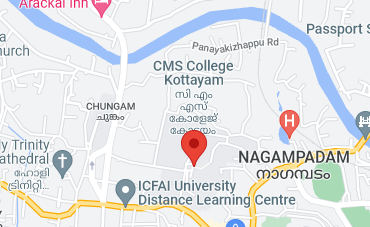(Semester – I)
CH1BO1 – Methodology of Chemistry as a discipline of Science
Credits- 2 (36 hrs)
Aim: To illustrate the methodology of science in chemistry
Objectives:
To have a broad outline of the methodology of science in general and Chemistry in particular
To understand the important analytical and instrumental tools used for practicing chemistry
To learn computer based presentation and statistical analysis of data using spreadsheet software
To apply these skills in the analysis of experimental data in chemistry practical
- Chemistry as a discipline of science (9 hrs)
What is science? Scientific statements, Scientific methods–observation-posing a question-formulation of hypothesis-experiment-theory-law. Falsification (disproving) of hypothesis, inductive and deductive reasoning, revision of scientific theories and laws.
Methods of science as illustrated through the following
- Laws of chemical combination- Faradays laws of electrolysis- Daltons atomic theory-atom models- J.J.Thomson, Rutherford, Bohr model and quantum mechanical model of atom.
- n-P-V-T relation of gases-gas laws-kinetic molecular theory
Role of concepts and models in science.
Evolution of Chemistry- ancient speculations on the nature of matter, early form of chemistry-alchemy, origin of modern chemistry.Structure of chemical science: scope of chemical science,theory and experiment, branches of chemistry. Role of Chemistry as a central science connecting Physics, Biology and other branches of science. Interdisciplinary areas involving Chemistry- Nanotechnology, Biotechnology.
Chemical science in the service of man: Drugs, food, flavouring agents, sweeteners, cosmetics, soaps and detergents, paints, varnishes, textiles, dyes, fertilizers, insecticides, fuels etc – examples in each.
Methodology of chemistry: Symbols, formulae, Chemical equations, classification (periodic classification of elements, classification of organic compounds into homologous series), Analysis (qualitative and quantitative), preparation, synthesis, manufacture.
References
- A. Lee, Scientific Endeavor, Addison Wesley Longman (chapters1and 2)
- N. R. Rao, University General Chemistry, MacMillan (India) Ltd (Chapters 1 and 2)
- Research in Science (9 hours)
Selecting a topic – hypothesis-design of experiment: variables, correlation and causality, sampling, use of controls, experimental bias, analysis, results, discussion of results, models.
Summary of the scientific methods. Writing Science
Reference
J.A Lee, Scientific Endeavor, Addison Wesley Longman (chapters3, 9 and Appendix 3)
- Analytical and synthetic methodologies in Chemistry (9 hours)
Titrimetric analysis: fundamental concepts – mole, molarity, molality, ppm and ppb primary standard-secondary standard, quantitative dilution – problems. Acid base titrations- titration curves –pH indicators. Redox titrations – titration curve –titrations involving MnO4– and Cr2O72- – redox indicators. Complexometric titrations – EDTA titrations – titration curves – indicators- Gravimetric analysis: Unit operations in gravimetric analysis Illustrations using iron and barium estimation. Synthetic methodologies – condensation – addition- examples. Separation and purification techniques – Filtration, Crystallization and precipitation – concept of solubility product as applied in group separation of cations – problems. Fractional distillation, Solvent extraction.
References
- R. Puri, L. R. Sharma, Kalia, Principles of Inorganic Chemistry, Milestone Publishers, New Delhi (Chapter40)
- A. Skoog, D. M. West, and S. R. Crouch, Fundamentals of Analytical Chemistry 8th edn, Brooks/Cole Nelson (Chapters 12-17)
- Vogel’s Textbook of Quantitative Chemical Analysis 6th edn, Pearsons Education Ltd(Chapters 10,11)
- D. Christian, Analytical Chemistry, JohnWiley and Sons(Chapters 5,7,8,16,17)
- Data Analysis (9 hours)
Units, significant digits, rounding, scientific and prefix notation, graphing of data – Precision and accuracy – Types of errors – Ways of expressing precision – Ways to reduce systematic errors – reporting analytical data ,Statistical treatment of analytical data
– population and samples –Mean and standard deviation – distribution of random errors– confidence limits – tests of significance – Correlation and regression – linear regression analysis, calculation of regression coefficients (slope, Intercept) using scientific calculator – methods of least squares.
The following section is non-evaluative for theory examination
Familiarization of software packages for analysis and graphical representation of data – MS Excel, Origin, Openoffice calc (Physical Chemistry experiments using software packages are included in the 5th and 6th semesters), simulations, virtual experiments, drawing molecular structures using Chemsketch, ISIS Draw.
References
- R. Puri, L. R. Sharma, K. C. Kalia, Principles of Inorganic Chemistry, Milestone Publishers, New Delhi(Chapter40)
- A. Lee, Scientific Endeavor, Addison Wesley Longman (Appendices 1,2 and 4)
- A. Skoog, D. M. West, and S. R. Crouch, Fundamentals of Analytical Chemistry 8th edn, Brooks/Cole Nelson (Chapters 5-8)
- Vogel’s Textbook of Quantitative Chemical Analysis 6th edn, Pearsons Education Ltd.(Chapter 4)
- D. Christian, Analytical Chemistry, JohnWiley and Sons(Chapter 2)
- Crouch and F. J. Holler, Applications of Microsoft Excel in Analytical S.Chemistry, Brooks/Cole
Further Reading
- Mills and P. Evans, Core Chemistry, Foundation books Pvt Ltd, New Delhi (2004)
- F. Gieryn, Cultural boundaries of science, UniversityChicago Press, 1999
- Collins and T. Pinch, The Golem, What everyone should know about science, Cambridge University Press, 1993
- Hewitt, Paul G, S. Lyons, J. A. Suchocki and J. Yeh, Conceptual Integrated Science, Addison Wesley, 2007
- Methods for Teaching Science As Inquiry, Allyn and Bacon, 2009
- V. S. Sarma, Statistics made simple, Prentice-Hall of India, New Delhi.
- Crouch and F. J. Holler, Applications of Microsoft Excel in Analytical S.Chemistry, Brooks/Cole.
- D. Jarrard, Scientific Methods,[email protected],2001
- Sangenburg, D. K. Moser, History of Science (5 volumes), Universities Press (India) Ltd.
Practical: CH1B01 Volumetric Analysis
Credit- 1 (36 hrs)
- Acidimetry and alkalimetry
- Strong acid – Weak base
- Strong base – Weak acid
- Estimation of Na2CO3 and NaHCO3 in a mixture
- Estimation ofNaOH and Na2CO3 in a mixture
- Estimation of ammonia in ammonium salts by direct and indirect methods
- Complexometry
- Estimation of Zn using EDTA
- Estimation of Mg using EDTA
- Estimation of Mg and Ca in a mixture
- Estimation of Ni
- Determination of hardness of water
References
- A. Skoog, D. M. West, and S. R. Crouch, Fundamentals of Analytical Chemistry 8th edn, Brooks/Cole Nelson (Chapters 13,14)
- Vogel’s Textbook of Quantitative Chemical Analysis 6th edn, Pearsons Education Ltd.(Chapter 10)
- D. Christian, Analytical Chemistry, JohnWiley and Sons(Chapters 7,8)
- D. Day, A. L. Uderwood, Quantitative analysis,6th Edn.,Prentice Hallof India Pvt. Ltd (Chapters 6,8)

